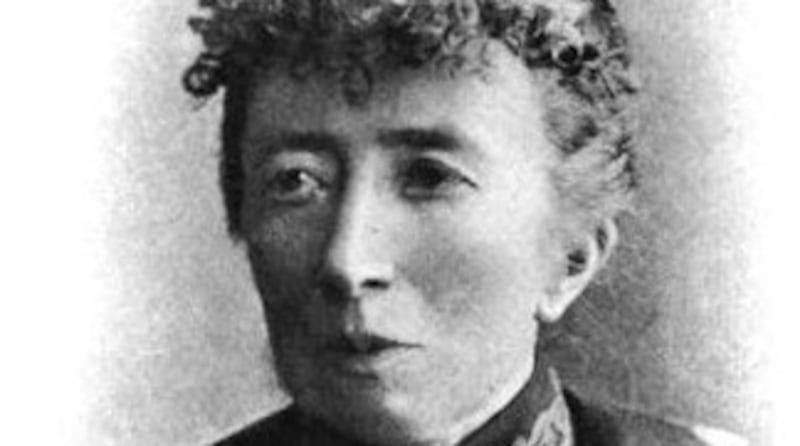While gender imbalance continues in astronomy and astrophysics, some remarkable Irishwomen have strategically navigated the male-dominated scientific world to make exciting discoveries and produce important work.
Pioneering 19th-century women astronomers paved the way for later women like astrophysicist Susan McKenna-Lawlor of Maynooth University. Her work as managing director of Space Technology Ireland Ltd, and her role in experiments flown on missions to Mars, Venus and the moon, continues to shape our knowledge of the universe.
To mark Space Week, which takes place from October 4th to 10th, this article highlights some remarkable Irishwomen in the history of astronomy and astrophysics down through history.
Annie Russell Maunder
Born in Strabane in 1868 to a Presbyterian minister who valued education, Annie attended the Ladies’ Collegiate School in Belfast before winning a three-year scholarship at Girton College, Cambridge. She was an outstanding student but was barred by her gender from receiving her degree.
From 1891, she worked at Greenwich Royal Observatory on a photoheliographic programme, photographing the sun and sunspots. This work saw her proposed for fellowship of the Royal Astronomical Society, but, as a woman, her nomination was refused. Instead, she joined the more democratic British Astronomical Association, of which her future husband Edward Maunder and fellow Irish astronomer Agnes Clerke were founding members.
In 1895, Maunder’s marriage forced her to leave her job, but she continued to practise astronomy and publish in scientific journals. She photographed solar eclipses in Norway, India, Algiers and Mauritius with a camera of her own design.
Maunder was finally granted fellowship of the Royal Astronomical Society in 1916, following the removal of the ban on female fellows. In 1970, a lunar impact crater was named in her honour.

Agnes Clerke
Without the benefit of any formal education, Skibbereen-born Agnes Clerke became one of the most important Victorian science writers. She was home-schooled in what her brother later described as an “environment of scientific suggestion”. Her father was a bank manager with a Classics degree who erected a telescope in the garden of their home, teaching his children how to find Jupiter’s satellites and Saturn’s rings.
Clerke first studied the history of science while living in Florence in 1873 to 77, but when she moved to London, she began to publish hundreds of articles on the subject for the Edinburgh Review, Encyclopaedia Britannica, and the Dictionary of National Biography. In 1885, her first book, A Popular History of Astronomy, established her as a gifted communicator who could explain modern astronomy in plain, non-technical language. Its success secured an invitation to spend three months at the Cape Observatory in South Africa.
To counter the Royal Astronomical Society’s discriminatory membership policy, Clerke became a founding member of the British Astronomical Association in 1890. In 1903, she was made an honorary member of the Royal Astronomical Society and, in 1973, her name was given to a moon crater.
Jocelyn Bell Burnell
Jocelyn Bell Burnell is popularly known for being denied a share in the 1974 Nobel Prize for physics. However, in the BBC series Beautiful Minds, she stated, “You can actually do extremely well out of not getting a Nobel Prize, and I have had so many prizes … that actually I think I have had far more fun than if I’d got a Nobel Prize, which is a bit flash-in-the-pan.”
These awards include several honorary doctorates, positions at prestigious international research institutes, and, in 2008, election as first woman president of the Institute of Physics.
Born in Lurgan in 1943, her fascination with astronomy was fostered through the ‘space race’ and childhood visits to Armagh Planetarium. As a PhD student at Cambridge in 1967, she discovered the radio pulsar. The signal came from 200 light years away, at approximately one pulse per second, and was initially named ‘Little Green Man 1’. The discovery was published in Nature in 1968, with Bell Burnell’s name listed among the five authors.
Whether she was denied the Nobel Prize due to her gender or her relatively low status as a graduate student, her meticulous record-keeping and her open-mindedness about what she was observing were crucial to the discovery of pulsars. She is now an advocate for students who are traditionally underrepresented in physics, and recently donated her $3 million Breakthrough Prize to help those students.
This Extraordinary Emigrants article was written by Angela Byrne, DFAT Historian-in-Residence at Epic The Irish Emigration Museum (https://epicchq.com) in Dublin's Docklands, an interactive museum that tells the story of how the Irish shaped and influenced the world. Hear space explorer, artist and communicator Niamh Shaw speak about Irishwomen's amazing contributions to astronomy and astrophysics at Epic on Wednesday October 10th at 5.30pm.




















